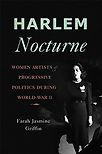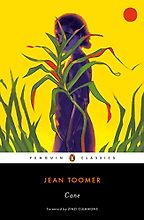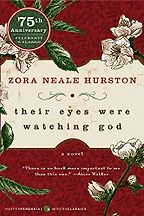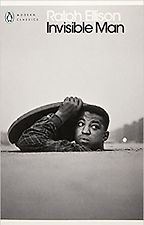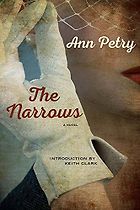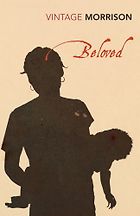Our topic is African American literature, the subject of many of your books and much of your career. University of Chicago’s Kenneth Warren asked, “What was African American Literature?” in a 2011 work of the same title. Could you answer that question, and speak to its premise?
Some subscribe to the notion that African American literature, what was once called ‘Negro literature’, should be narrowly defined as work written during the period of legalized segregation in the nation. Many of the writers I teach about are from that era of Jim Crow America.
But I see African American literature as a diverse body of works that are part of an ongoing conversation about what it means to be black in America. It is literature that concerns African American folklore and folk cultures. It is work about the social conditions that black people in the United States find themselves in. It is literature about the limitations and possibilities of black life in a nation where white supremacy still reigns.
In your book “Who Set You Flowin’?”: The African-American Migration Narrative, you identify migration as a major factor in the cultural production of African Americans and as a major genre in African American literature. Can you briefly explain what readers would learn by reading that book?
In African American literature, the slave narrative was the major genre of the nineteenth century. “Who Set You Flowing?” argues that twentieth century black artists—novelists, painters and musicians—created new cultural forms in response to not only segregation, but also two waves of migration from the South to the North and the West. We see migration’s effects on music, like Stevie Wonder’s ‘Living for the City‘ and visual artists, for instance, in Jacob Lawrence’s Migration Series. It’s also apparent in novels. In literature, the migration narrative has its own set of tropes, themes and even forms.
In Harlem Nocturne, you explain how what you call a “city within a city” nurtured twentieth-century African American novelists. Could you brief our readers on the Harlem Renaissance?
When we think of Harlem in literature, we often think of the Harlem Renaissance or what was known as the new Negro Movement. It’s that period from 1917 to the mid-1930s, although some people cut it off when the stock market crashed in 1929. It’s a period of awakening black consciousness and the creation of a large body of poems, novels and short stories written by African American writers like Langston Hughes and Zora Neale Hurston.
“I see African American literature as a diverse body of works that are part of an ongoing conversation about what it means to be black in America”
But Harlem continued to be a place of major importance to black artists into the 1940s and beyond. Harlem Nocturne concerns the period immediately preceding and following World War Two. This period included the Harlem Riots of 1943. It included the creation of musical forms like bebop. It produced writers, like Ann Petry, whose attention was less focused on Harlem Renaissance elites (and the culture they produced) than on the difficulties of working-class members of the Harlem community.
The first of your five choices is Jean Toomer’s Cane (1923). Please tell us about this exquisite work.
Cane is one of the most beautiful novels in all of American literature. It’s a hybrid text divided into three parts. The first part is a set of impressionistic sketches of a southern African American folk culture that is fading away. The next section of short stories and poems concern a character who migrates from the South to an urban setting. This section is attentive to the black bourgeois being formed in Washington DC. The final story, written like a drama, is set in Chicago but returns to the South. This section concerns a black artist from an elite background who takes as his subject black folk cultures. Cane does all of that work in a very short span of pages. It is a slim volume, but very dense.
Cane is credited with fusing two branches of literary modernism. How did it innovate and influence?
Before Cane, black life was written about in a linear way. Cane eschews straightforward storytelling; it’s a very experimental book in both form and content. It identifies the American South—because of and despite its horrors—as a place that black artists almost own by birthright. The women who animated Toomer’s Cane were very compelling, but later black writers used Toomer’s archetypes as starting points for more fully-realized characters. We can see that as early as Zora Neale Hurston and as late as Alice Walker or Toni Morrison, as well.
Onto Zora Neale Hurston. Tell us about Their Eyes Were Watching God (1937).
Hurston was an anthropologist and an ethnographer who did lots of field work, but here she turns to the novel as a form to explore black indigenous culture.
Black English is often disparaged as the vernacular of the uneducated; Hurston elevates black language to a level of poetry. She shows the worldview that one gets from language, which is a very spiritual one.
“Hurston gives us one of the first true love stories in African American writing”
Hurston gives us one of the first true love stories in African American writing. It’s a beautifully lyrical novel about a woman who married several times before falling in love with the person who helps her come into her own.
Hurston once responded to a critic who asked why she chose not to include an uplifting racial message in Their Eyes Were Watching God by saying, “Because I was writing a novel and not a treatise on sociology.” I know that Hurston was uniquely equipped to write a treatise on sociology, but I wonder whether critics impose extra expectations on African American literature and how those expectations affect its development.
Toni Morrison said, “Black literature is taught as sociology, as tolerance, not as a serious, rigorous art form.” There is a burden of being politically representational. Many African American writers write whatever they want, but audiences tend to want and expect a certain kind of realism and a certain kind of political stance on the part of the black writer. The work that get the most attention, that gets most widely-read, has tended to be work that can be read as a statement on blackness in America.
Next, a novel by New England author Ann Petry. Tell us about The Narrows (1953) and why it makes your list.
Petry is probably the least known of the writers on this list. I hope that will change. When people do read her, they tend to read The Street, her bestselling novel of 1946 about Lutie Johnson, a hard-working, working-class, single mother in Harlem. Petry writes in a social realist mode and addresses the social impediments to the progress of an African American woman who does everything right to escape a tragic fate. The story resonated in 1946 and continues to resonate today.
Five Books interviews are expensive to produce. If you're enjoying this interview, please support us by donating a small amount.
The Narrows is the novel that I think is her master work. It is set in a small New England city. Its protagonist is a young black man, a scholar-athlete who is born in that town and who falls in love with the town’s wealthy white heiress. I think it is Petry’s most accomplished novel, but it did not garner the attention it might have, perhaps because it came out around the same time as Invisible Man and Invisible Man was such a tour de force that it overshadowed The Narrows
You wrote extensively about Petry and edited a collection called Toward an Intellectual History of Black Women. Your list of five books is not unique in favoring female authors. Is there something about the market for African American novels that enabled gender parity among authors?
There might be an appearance of gender parity now, but throughout most of the tradition there had not been. Frederick Douglass was much better known in the nineteenth century than Linda Brent. Literary critics and historians drew attention to writers like Brent, and brought them back into publication.
Until the renaissance of writing by black women in the 1970s, with authors like Alice Walker, and in the 1980s with Toni Morrison, there was no parity. After they emerged at the forefront of African American literary production, garnering the greatest number of readers and the most critical acclaim, academics began recovering the work of writers like Petry and Hurston. Hurston’s work, which is now so well-known, had been out-of-print for decades. A generation of black feminists brought these writers back to the forefront.
Next, Ralph Ellison’s incandescent Invisible Man, published in 1952. It is a stalwart on American syllabi. Please tell us about it.
Until his posthumously published novels, Invisible Man was Ellison’s only novel in print. But if one could only publish one book, Invisible Man would be the one.
It engages a number of literary traditions—the high modernism of Joyce, Eliot and Pound, but also Dostoevsky and Marx. It’s filled with allusions to African American folklore, folk culture and history. It’s just a rich and dynamic novel.
Get the weekly Five Books newsletter
Invisible Man is epic in scope; appropriately, there are also allusions to Homer. It’s a great quest narrative. A young black, middle-class, intellectual protagonist navigates his way from a Tuskegee-like institution in the South through Harlem, confronting Garveyism and the Communist Party. It’s an incredibly ambitious novel, which was recognized as a tour de force from the instant of its publication,
Invisible Man was widely received as a work of genius, the first novel by an African American to receive The National Book Award. How did Ellison’s success impact the reception of African Americans literary production going forward?
Ellison wrote himself into canon. He was very hard to ignore, but for a while, he was treated as the only one. He probably did open a door by showing that one did not only have to write in social realism, one did not only have to write what is known as protest fiction. He showed that there was room for high modernist experimentation in African American literature. We wouldn’t have had a literary establishment ready for Morrison without Ellison.
Finally, Toni Morrison’s 1987 Pulitzer-winner Beloved. Please tell us about the novel and why it is essential reading.
Beloved was Morrison’s fifth novel. It’s a gripping story, inspired by a famous abolitionist case, the true story of a woman who runs away from slavery with her children, but when the slave catchers catch up with her, she kills one of her own and tries to kill the others, rather than returning them to slavery. We enter the story after the murder, after the trial.
“The specter of slavery is unrecognized and unnamed; it is embodied in a ghost-like, other-worldly figure”
What is of concern to Morrison is the way slavery haunts the formally enslaved, their progeny, and the nation. The specter of slavery is unrecognized and unnamed; it is embodied in a ghost-like, other-worldly figure. It’s a novel about trauma and psychic scarring, but it’s a novel that points toward a necessary reckoning with what she calls the black and lonely dead, those lost from the Middle Passage, through abolition to the racial violence of the twentieth century.
One last question: How is the twenty-first century’s widely-welcomed wave of African and first-generation American authors, like Chimamanda Ngozi Adichie and Teju Cole, changing African American literature’s unfolding story?
They understand the African and United States racial landscapes. They write about the diaspora in ways that are very forthright, rather than romanticized. They’ve read deeply in African literature and African American literature. We’ve had these two formations: African literature and African American literature. Writers like Chimamanda and Teju, and especially Yaa Gyasi, are bridging these traditions.
Five Books aims to keep its book recommendations and interviews up to date. If you are the interviewee and would like to update your choice of books (or even just what you say about them) please email us at [email protected]

